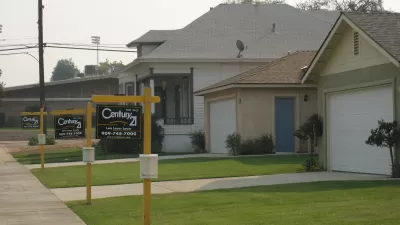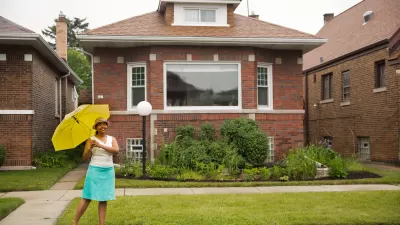Programs that help households of color buy homes haven't made much of a dent in the racial wealth gap. But some strategies could generate better outcomes for buyers.

Homeownership remains one of the most common tools employed to try to help Black families build intergenerational wealth. However, for reasons authors in this series have detailed, simply achieving the dream of buying a house often does not generate the results that it generates for white families. Households of color tend to own homes of lower value and have a higher percent of their assets in home equity, feeding into the disproportionately low share of wealth held by Black and Latinx households.
Housing advocates say that without significant policy and practice changes, both the racial homeownership gap and the racial wealth gap will remain wide for decades to come.
Race-Conscious Programs
One step is to actually target specific groups for support, rather than assuming that programs targeting low-income homebuyers will be sufficient. "When you are a policymaker, you are thinking about things that are good for all … but we didn’t get here because of policies that were good for all," stated Chrystal Kornegay, executive director of MassHousing, during a webcast in December 2021 hosted by the Urban Institute. MassHousing is an independent, quasi-public agency that lends over a billion dollars annually to produce and preserve affordable rental housing and to create homeownership opportunities for low- and moderate-income borrowers.
"You can’t have a race-conscious solution that doesn’t actually include race in it," she added.
Although programs to help people of color get into homes have been around for decades, Laurie Benner, associate vice president of programs at the National Fair Housing Alliance, says the racial homeownership gap is still prevalent because "none of the programs have been racially explicit."
There’s an idea out there that "because of fair housing laws . . . you can’t say 'This program is for this category of people,'" Benner adds, "but in fact, lenders can do it. They can create a loan program just for Black people, or Latino people, or for AAPIs, Indigenous people, and so on."
Through the Equal Credit Opportunity Act, financial institutions are permitted to develop special purpose credit programs (SPCPs) to meet special social needs and benefit disadvantaged groups. When properly designed, SPCPs can play a crucial role in promoting equity and inclusion, building wealth, and removing barriers that have contributed to housing instability and residential segregation.
So the resistance isn’t legal, it’s optics—a throwback to colorblind ideals. "We’ve seen lending programs for people with disabilities, and no one is outraged by that," explains Benner, "but if a lender were to introduce a mortgage program specifically for Black or Latino people, it would almost certainly be subject to legal challenge."
Benner adds that some banks have ...
FULL STORY: Making Homeownership Work Better

Study: Maui’s Plan to Convert Vacation Rentals to Long-Term Housing Could Cause Nearly $1 Billion Economic Loss
The plan would reduce visitor accommodation by 25,% resulting in 1,900 jobs lost.

North Texas Transit Leaders Tout Benefits of TOD for Growing Region
At a summit focused on transit-oriented development, policymakers discussed how North Texas’ expanded light rail system can serve as a tool for economic growth.

Using Old Oil and Gas Wells for Green Energy Storage
Penn State researchers have found that repurposing abandoned oil and gas wells for geothermal-assisted compressed-air energy storage can boost efficiency, reduce environmental risks, and support clean energy and job transitions.

From Blight to Benefit: Early Results From California’s Equitable Cleanup Program
The Equitable Community Revitalization Grant (ECRG) program is reshaping brownfield redevelopment by prioritizing projects in low-income and environmental justice communities, emphasizing equity, transparency, and community benefits.

Planting Relief: Tackling Las Vegas Heat One Tree at a Time
Nevada Plants, a Las Vegas-based nonprofit, is combating the city’s extreme urban heat by giving away trees to residents in underserved neighborhoods, promoting shade, sustainability, and community health.

How Madison’s Tree Planting Efforts Are Growing a Healthier Community
Madison’s annual tree planting initiative is enhancing environmental resilience, public health, and community livability by adding 1,400 carefully selected trees citywide, with strong community and institutional support for urban forestry.
Urban Design for Planners 1: Software Tools
This six-course series explores essential urban design concepts using open source software and equips planners with the tools they need to participate fully in the urban design process.
Planning for Universal Design
Learn the tools for implementing Universal Design in planning regulations.
Ascent Environmental
Borough of Carlisle
Institute for Housing and Urban Development Studies (IHS)
City of Grandview
Harvard GSD Executive Education
Toledo-Lucas County Plan Commissions
Salt Lake City
NYU Wagner Graduate School of Public Service





























